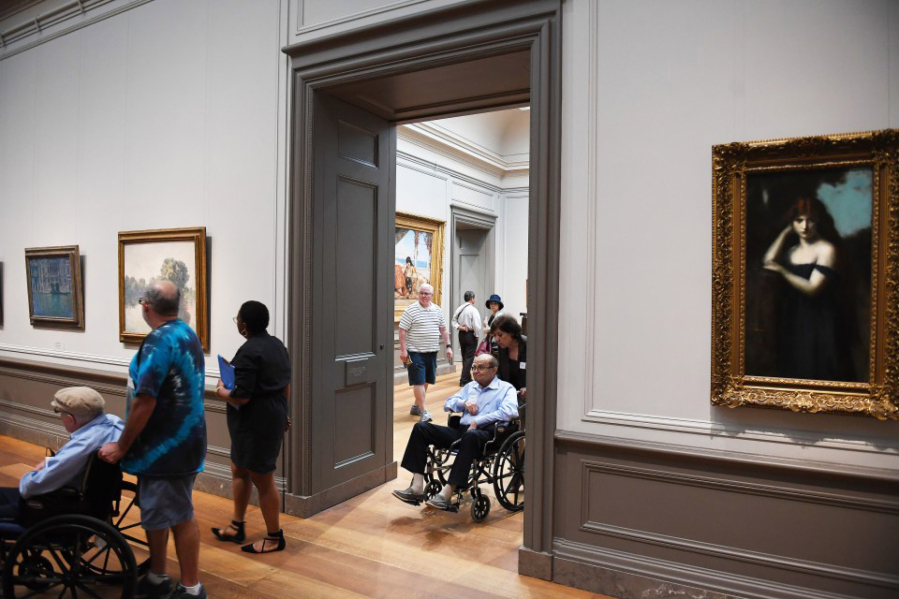Over the decades that Marie and Bill Fanning raised five children in Northern Virginia, they were regular visitors to the National Gallery of Art in Washington. They loved the Wyeth and the Copley paintings, and they watched with interest as the soaring East Building rose in the 1970s. But with so many children to run after, they rushed past many paintings without stopping.
Now retired, they are engaging with their beloved museum in a different way. Marie, 74, was diagnosed five years ago with mild cognitive impairment, and on Monday she and Bill, 76, participated in a new program, “Just Us at the National Gallery of Art,” which leads people with memory loss and their caregivers through an intensive meditation on a few paintings in the collection. The biweekly pilot started in April and runs through July, after which the museum hopes to make it permanent.
In one of the West Building’s galleries, memory loss patients and their caretakers — eleven in all — sat in wheelchairs and folding stools in front of “En route pour la peche,” an 1878 oil painting by John Singer Sargent of women and children walking along a beach in northern France.
“Take a nice deep breath and take in the painting on the inhale,” said Lorena Bradford, the museum’s head of accessible programs. “Let your eyes wander all over the painting, there’s a lot to notice. What’s the subject? Where are we?”



